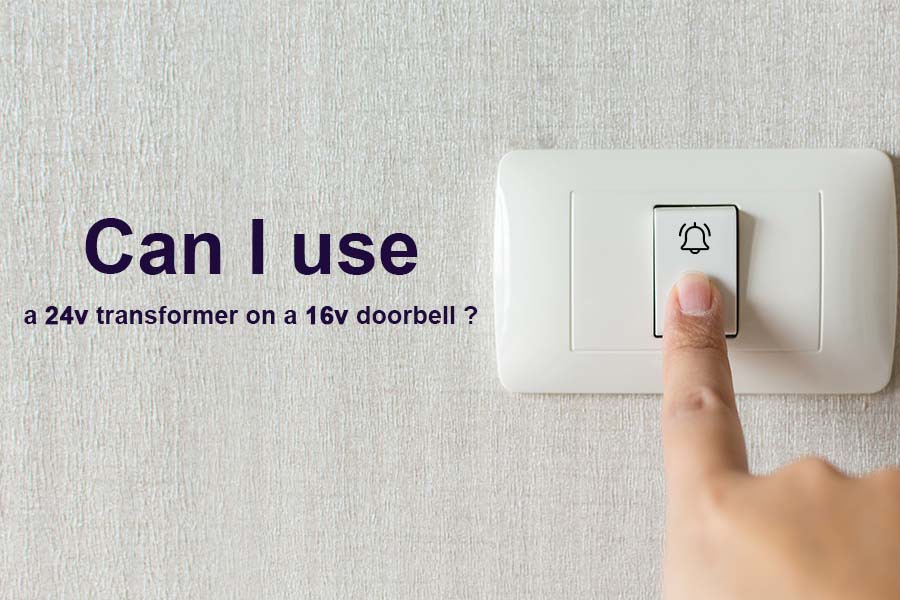Most doorbells require a precise level of voltage. For example, the average voltage needed for a doorbell is 16V, and you need to have a 16V transformer to supply the exact level your doorbell needs. We read through several portals where people asked if they could use a 24V transformer on a 16V doorbell.
The main point to consider here is that the doorbells require minimal voltages to operate with power. Although most houses have a power output of 120V, they need transformers to convert line voltages to a low voltage power line that is ideal for the doorbells to
Can a 24V Transformer be Used on a 16V Doorbell?
The question “Can I use a 24V transformer on a 16V doorbell?” has been one of the most frequently asked questions in various discussion forums. Hence, we decided to clear this up by explaining whether using a 24V transformer on a 16V doorbell is safe.
We will say yes for a short version of the answer. You can use a 24V transformer on a 16V doorbell. However, we are obligated to mention that it wouldn’t be that safe to do so. Commonly, doorbells are meant to support up to 20% of the required voltage. Still, it isn’t feasible for a 16V doorbell to use a 24V transformer.
While you still choose to use a 24V transformer, it wouldn’t be such a safe idea. You will always run a risk of heavy power falls. But if you want to go through with it, then we suggest you get a resistor. You will need to amass an additional eight voltages that are on the transformer.
A resistor works perfectly once you connect it in alignment with the transformer. You may use Ohm’s Law to calculate voltage to estimate the amperes of the resistor you would need to perfect it further.
Usually, keeping in view the general needs, a 4W 16-ampere resistor can be connected with the transformer, which will be perfect for you. Once you are done with the setup, you can use a 24V transformer on a 16V doorbell.
Don’t forget to check out our guide on how to get started with home automation!
